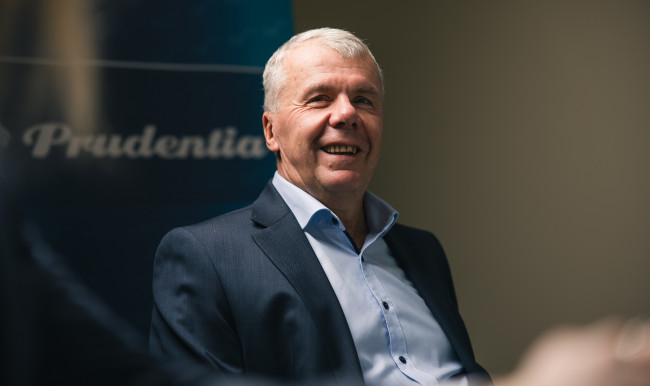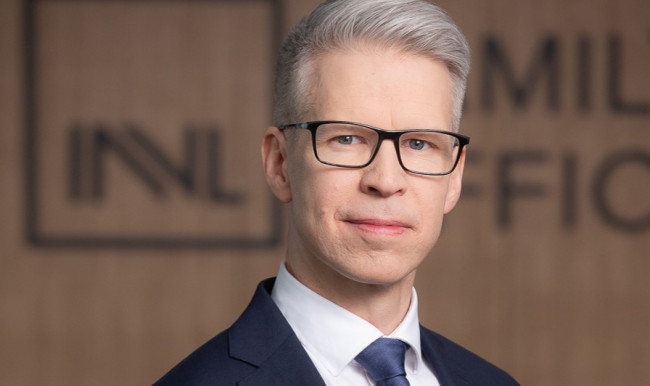Explanations and comments on the changes in TOP101 in 2024
Aleksei Vorobjov
Senior Analyst of Prudentia Tallinn
TOP101, the ranking of the most valuable companies in Estonia, has over the years become an important reference point for assessing the health of the Estonian economy. Below I will highlight the basic methodology for ranking the companies, and mention changes that impact this year's leaderboard.
When ranking companies in TOP101, we evaluate the value of the company's business, that is, how much value the company creates for both its owners and creditors through its business activities.
TOP101 companies are ranked by the comparison method. For typical companies, we use the Company value/EBITDA multiplier and for financial institutions, the P/B multipliers. For most companies, the value of the business is calculated as follows: the adjusted EBITDA is multiplied by the sector average company value/EBITDA indicator. You can read more about the ranking methodology in Sulev Raik's article that is available under the following link: Sulev Raik | Putting a price on a company - methodology behind TOP 101
At this point, it should be taken into account that the value of the company's business operations is not always equal to the value of the whole company. This method does not take into account all the assets of the company, which often generate not operational, but financial income. Financial income is not included in the EBITDA calculation. Illar Kaasik has already addressed this topic in his article that is available under the following link: Illar Kaasik | Swedbank wins TOP 101, but Infortar IPO may change things next year
One of the most prominent examples in this situation is the company NOTORIOUS OÜ. While the company's assets exceeded 1 billion euros by the end of 2023, it did not qualify for the TOP101. The majority of the assets of NOTORIOUS are shares of Wise and the owner of NOTORIOUS is Taavet Hinrikus, one of the founders of Wise.
Last year, NOTORIOUS earned over 160 million euros in financial income, but its operating profit was negative by 4.6 million euros. This shows that the company's value comes mainly from large financial investments and not from everyday business operations. Although the company's daily business is not large enough to be included in the TOP101, its total value is significantly higher than that of most other companies in the TOP101ranking.
One change that compilers of TOP101 have introduced this year in TOP101 concerns companies whose financial year ends at the end of April. Considering that for such companies the deadline for submission of their annual reports is the end of October, they were not usually included in TOP101. However, these companies play an important role in the Estonian economy. Therefore, it was decided to make an exception for them this year and they are assessed on the basis of three financial years ended in April 2021, April 2022 and April 2023, respectively.
Thanks to this change, this year's ranking also includes companies such as
CIRCLE K EESTI AS
SPORTLAND INTERNATIONAL GROUP AS
The third candidate was MM Grupp OÜ, a company owned by Margus Linnamäe, but by the time of the compilation of TOP101, the company had moved its main asset, MM Pharma OÜ, out from the group.
Also one other company - VKG - deserves a comment. Two years ago, VKG or Viru Keemia Grupp AS began structural changes, and registered Kirde Investeeringud OÜ (which through its subsidiary Kirde Varad OÜ owns real estate, factories and equipment) and Viru Keemia Grupp AS which focuses on production. Kirde Varad OÜ leases real estate and equipment to Viru Keemia Grupp AS. Given the strong interconnectedness of the two companies, as well as the fact that the plants and equipment cannot be used for other purposes and both companies belong to the same group - TARS International GmbH - they are treated as a single entity for the purposes of TOP101.
TOP101 and TopTech rankings are like an X-ray image of the Estonian economy, allowing for in-depth study of the largest and most dynamically developing segments. Analysing the data in these rankings allows you to identify general trends in different sectors. This, in turn, makes it possible to assess whether changes in one company are rather an exception or reflect deeper processes taking place across the sector.



